The Curse of Oak Island- Season 8, Episode 5: The Master Plan
The following is a plot summary and analysis of Season 8, Episode 5 of the History Channel’s TV series The Curse of Oak Island.
[SPOILER ALERT!!!]
Plot Summary
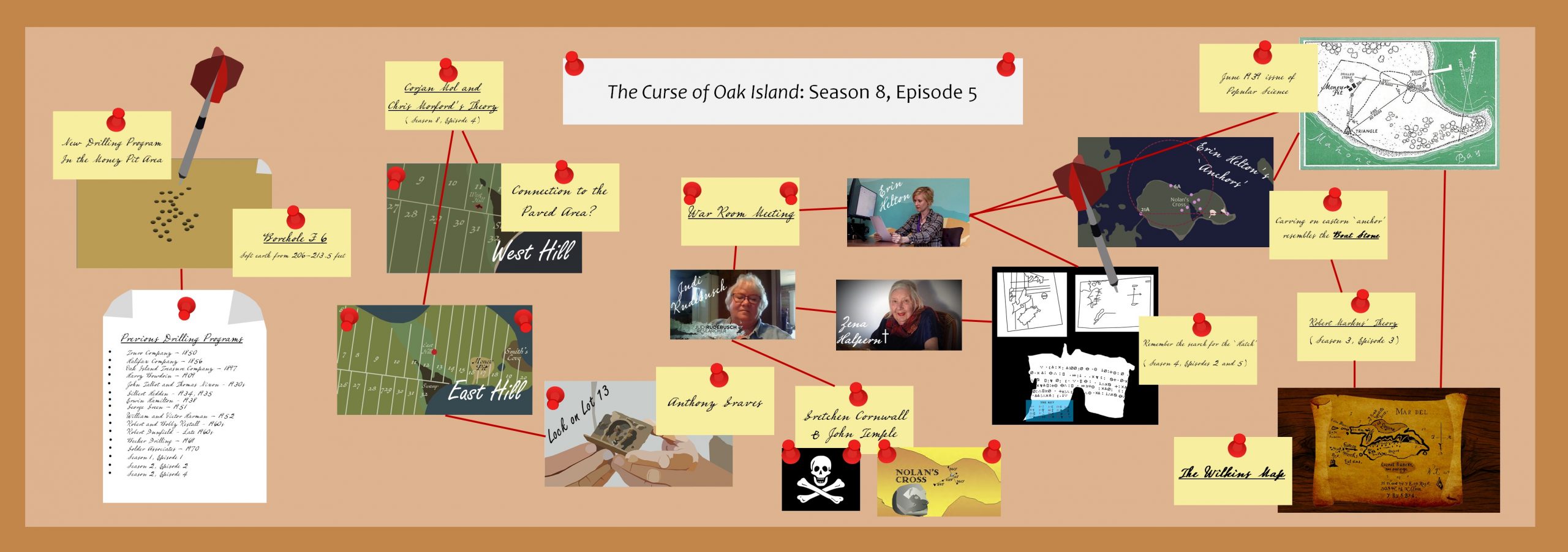
The episode begins at the Money Pit area, where Rick Lagina, Charles Barkhouse, and Terry Matheson stand by as members of Choice Drilling drive across the causeway and set up their drilling rig. Nearby, Steve Guptill and Doug Crowell, equipped with a GPS device and a survey map, locate the site of F6, the first of many drillholes Choice Drilling has been tasked with punching in the Money Pit area this season.
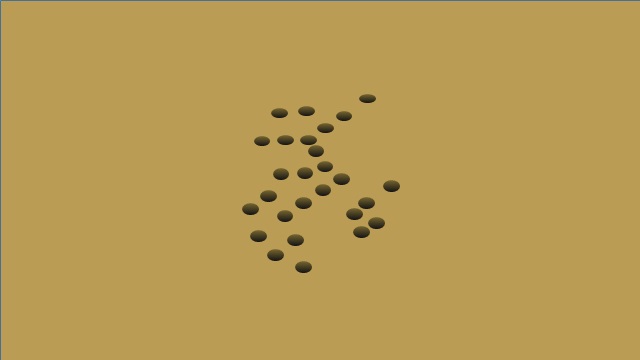
Later that day, members of the Oak Island team meet at the West Hill feature on Lot 11, the water-filled depression identified as a potential area of interest by theorists Corjan Mol and Chris Morford the previous episode. Dr. Ian Spooner, who appears to be in charge of the feature’s excavation, tasks Gary Drayton with examining the area surrounding the pond for any metal artifacts. While Drayton goes about his business, other members of the team use chainsaws to clear the area surrounding the feature of small trees and vegetation. When Drayton fails to find anything of interest, Billy Gerhardt uses a backhoe to excavate the dirt mound beside the pond, which some of the treasure hunters suspect might be spoils from a previous excavation. The mound proves to be entirely devoid of rocks. Beneath it, the treasure hunters find rocks arranged in a pattern which Dr. Spooner contends evokes the Paved Area in the swamp.
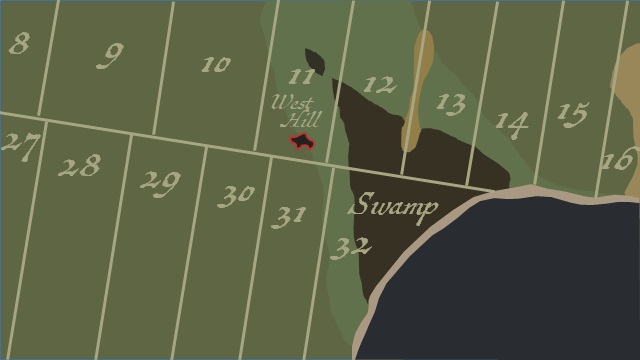
Later that afternoon, the Fellowship of the Dig meets in the War Room to Skype with theorists Erin Helton and Judi Rudebusch. While introducing herself, Helton states that she began her career in Geographic Information Systems (GIS), a field of study revolving around a type of computer system used for collecting, mapping, and comparing geographic data. The narrator then informs us that Helton has “spent over a decade studying archaeological surveys and excavations throughout North America.” Judi Rudebusch, on the other hand, was a friend and research partner of the late Oak Island theorist Zena Halpern. Back in Season 6, Episode 6, Rudebusch introduced the Oak Island team to writer Gretchen Cornwall and Cornwall’s research partner, John Temple, who presented their own Oak Island theory.
Helton informs the treasure hunters of her attempt to determine the geographic coordinates of the “Anchors” alluded to on Zena Halpern’s mysterious map of Oak Island, the map having been introduced in the Season 4 premiere. In order to do this, she first plotted the coordinates of the boulders which comprise Nolan’s Cross. Then she used Steve Guptill’s survey data to plot a boulder found during the crew’s Season 6 excavations at Smith’s Cove, which she labelled “20A”. Later in the episode, this boulder is revealed to be the drilled stone discovered by Gilbert Hedden in the 1930s. Next, she plotted 21A, a boulder which lies on Oak Island’s westernmost end. Helton observed that 20A was located perfectly due east of 21A. Next, the GIS expert noted the position of a third boulder, which she called “6A”, located on Oak Island’s northwestern beach. She then drew a circle drawn around 6A with a radius measuring the distance between that boulder and 21A, and noticed that a fourth boulder lay at the intersection of its circumference and a line drawn along the crossbeam of Nolan’s Cross. She called this fourth boulder “15A”, and identified it as the western anchor on Zena Halpern’s map. Finally, Helton locates a fifth point of interest on Oak Island’s northeastern beach, situated 30 degrees east of north of 15A, which she identifies as the eastern anchor on Halpern’s map. “I have numerous alignments and very faint LIDAR suggesting that there will be a boulder located [at that point]”, she concludes.

Next, Erin Helton shows the treasure hunters a map of the eastern half of Oak Island, which was included in an article published in the June 1939 issue of the magazine Popular Science. This map features the original Money Pit, the two famous drilled stones, and other landmarks which dot the island’s eastern half. Helton compared the data from this map to her own map of Oak Island and plotted what she believes to be the location of the original Money Pit. This location, Helton informs the treasure hunters, lies three feet away from Borehole RF-1 (sunk from Season 7, Episodes 21-23), which Steve Guptill believes to be the caisson which lies closest to the original Money Pit.

The next day, Marty Lagina, Charles Barkhouse, Terry Matheson, and Scott Barlow examine core samples brought up from the Money Pit area by Choice Drilling, which has already commenced the operation with which it has been tasked. While they work, Barlow informs his treasure hunters that one of Choice’s drills dropped into a void which extends from 206-213.5 feet below the surface. The treasure hunters examine a core sample taken from this depth and find that it contains loose wet earth. “Still don’t see any real void, though,” Marty concludes, implying that the medium through which the drill dropped appears to have been this soft material rather than open air. The crew decides to abandon the hole and begin on their next borehole.
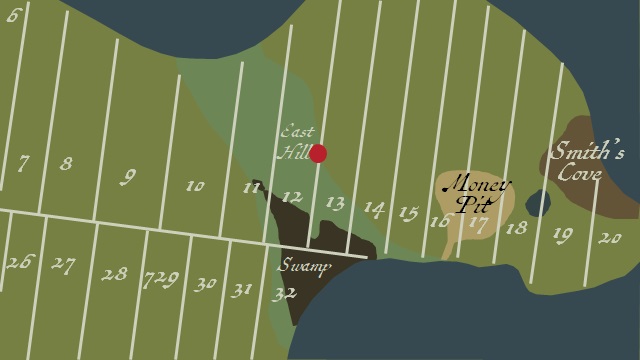
Meanwhile, Rick Lagina and Gary Drayton do some metal detecting on Lot 13 near the East Hill feature introduced in the previous episode. After passing over what appears to be modern iron, Drayton finds an old iron lock, which he suggests was once part of a Victorian-era cabinet or bureau. Rick observes that this artifact lies near the old home of Anthony Graves, a former Oak Island landowner.
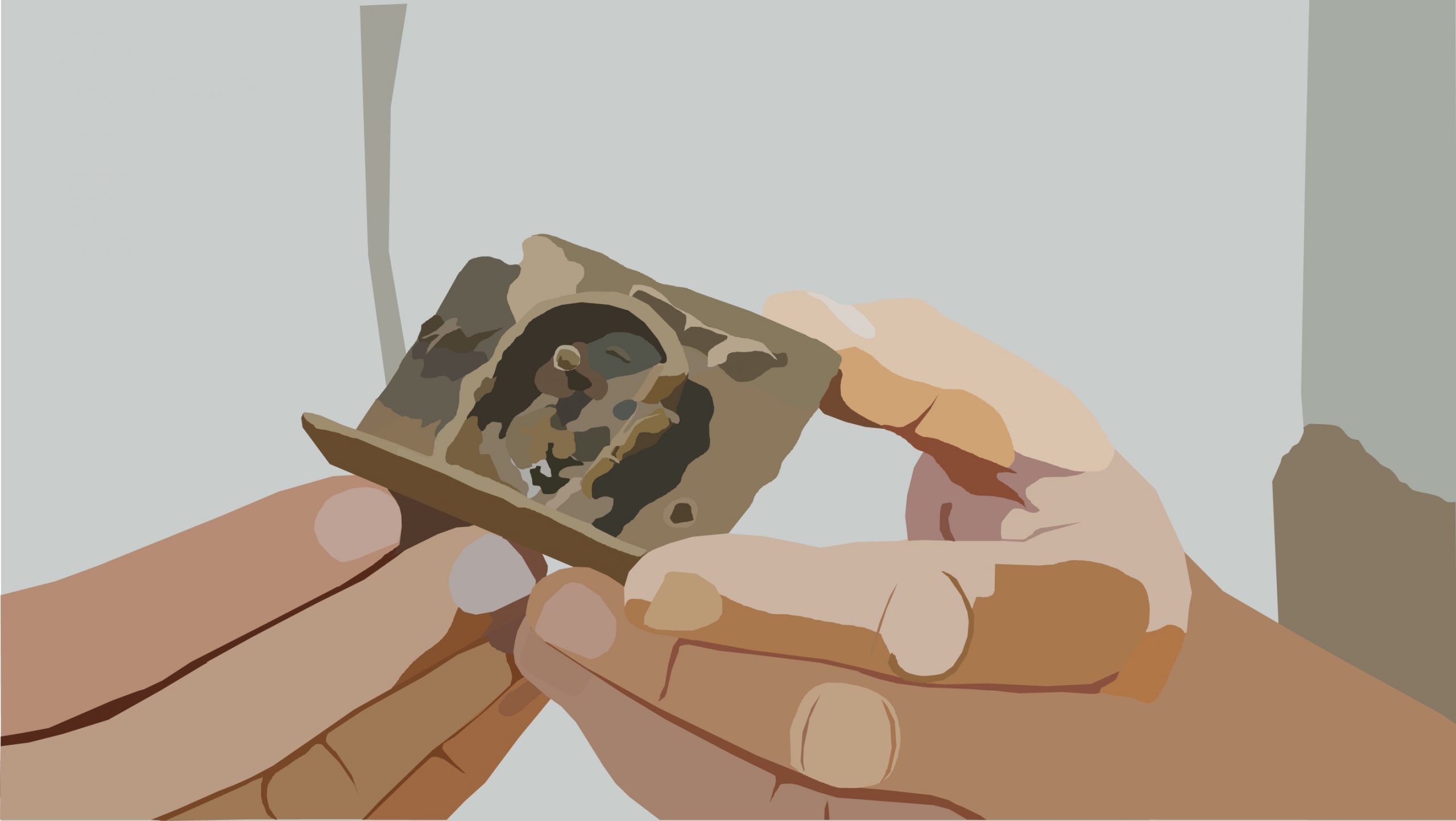
Later, Marty and Alex Lagina, Jack Begley, Gary Drayton, and Steve Guptill meet at the Oak Island swamp. Guptill leads the treasure hunters to the westerly anchor point identified by Erin Helton, at which they find the top of a small white boulder buried deep in the ground. Jack Begley manually unearths the boulder with a shovel, whereupon Guptill finds a tiny depression on its surface. The treasure hunters speculate as to whether the stone might have served as some sort of anchor to which boats were moored years ago, as suggested by Helton’s theory. An obviously skeptical Marty says, “I’m hoping there’s something underneath. That would make sense. You could send a guy out and, say, give him a general area… Go the harbour, pull your boat in, look to your right, you’ll see a bunch of stones, turn them over until you find the one with a mark on it, that’s the anchor stone. I could buy that.” The treasure hunters then use a crowbar to expose the rock’s bottom face but fail to find any obviously manmade markings thereon.
Steve Guptill proceeds to lead his fellow treasure hunters to the site of Helton’s supposed northeasterly anchor stone. We learn later on the episode that this site lies at the edge of the Boulderless Beach, a stretch of beach on Oak Island’s northeastern shore curiously devoid of large rocks. The crew members indeed find a boulder at the site, which sits at the base of a beachside tree, and which bears great resemblance to the stone at the westerly anchor point in both size and appearance. It must be mentioned that the surrounding beach is littered with similar-looking stones. Guptill examines the top of the rock and finds a t-shaped marking. Alex Lagina opines that this marking is probably natural, but suggests, perhaps imaginatively, that another adjacent marking evokes one of the carvings on the Boat Stone. The Boat Stone, the narrator informs us, is a controversial rock from Westford, Massachusetts, inscribed with a picture of what some have identified as a 14th Century sailing ship, an arrow, and the number 184, which some theorists have taken as evidence of a 14th Century voyage to the New World. The narrator goes on to remind us that the Boat Stone features in Robert Markus’ theory, which was presented back in Season 3, Episode 3.
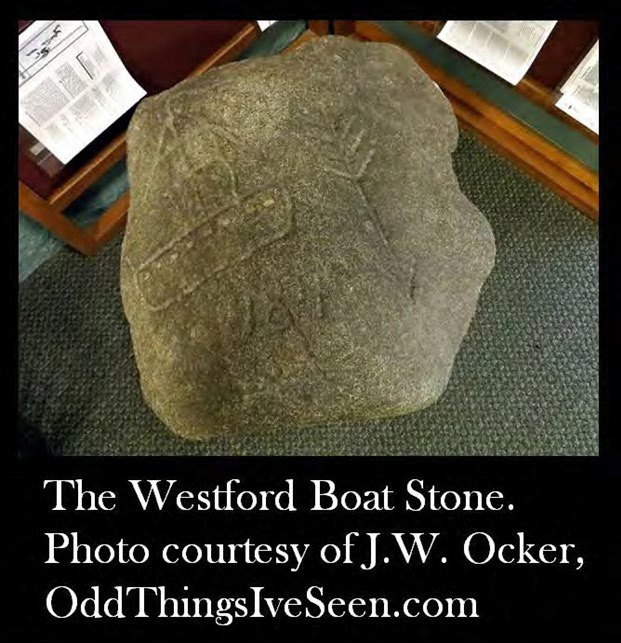
Following their excursion, the treasure hunters meet with the rest of the Fellowship outside the Oak Island Interpretive Centre and describe the results of their search for the anchor stones. Marty Lagina expresses his skepticism, saying that he would expect the anchor stones to be massive if they were indeed considered landmarks as suggested by Halpern’s map. Jack Begley, on the other hand, says that he found the western stone intriguing due to the pockmark on its surface and its location in relation to the swamp. In a later interview, Rick Lagina, who has made no secret of his admiration for Zena Halpern and her work in the past, voices his appreciation for Erin Helton’s efforts to investigate the anchor points on Halpern’s mysterious map of Oak Island.
Analysis
Drilling Operations on Oak Island
In this episode, Oak Island Tours Inc. hired Choice Sonic Drilling to conduct a program drilling operation in the Money Pit area, a procedure which they carried out in Season 7, Season 6, and especially Season 5. In order to determine the crew’s motive for repeating this recurrent exercise, a brief history of the drilling operations in the Money Pit area may be required.

Back in the summer of 1850, the Truro Company erected a drilling platform in the original Money Pit at a depth of 30 feet. Under the direction of their drilling engineer, Jotham B. McCully, the company labourers drilled five holes, after each of which they inspected the material that clung to the surface of their drill bit. In addition to clay, dirt, and wood, the men drilled through what they believed to be metal pieces suggestive of gold or silver coins. Some of the more interesting items they brought to the surface were three tiny links of gold chain, which some of the workmen likened to links from an ancient watch chain or a chain tassel from a military uniform’s epaulette; and a mystery item which drilling crew foreman John Pitbladdo slipped into his pocket before quitting the company making a pitch to another treasure-hunting syndicate.

In 1866, members of the Halifax Company conducted another drilling operation in the Money Pit. They recovered spruce wood at a depth of 110 feet, coconut fibre and charcoal at a depth of 128 feet, and soft earth at a depth of 150 feet, which suggested that the Money Pit’s supposed treasure chests were sinking deeper into the earth.
In 1897, the Oak Island Treasure Company excavated the Money Pit to a depth of 90 feet. Using steam-powered pumps to keep the floodwater in check, they set up a drilling platform there and began prospecting the Money Pit to depths never before reached by previous Oak Island treasure hunters. Their findings were some of the most astonishing discoveries made on the island to date. In addition to wood, blue clay, and what appeared to be two impenetrable iron plates, the drillers discovered what has been dubbed the Chappell Vault, a supposed seven-foot-tall, 154-foot-deep compartment with an outer layer of cement and an inner layer of oak, filled with soft, loose metal suggestive of gold or silver coins. While examining the drill bit believed to have pierced the Chappell Vault, the treasure hunters discovered a small piece of sheepskin parchment with the letters “vi” written on it in India ink with a quill pen.
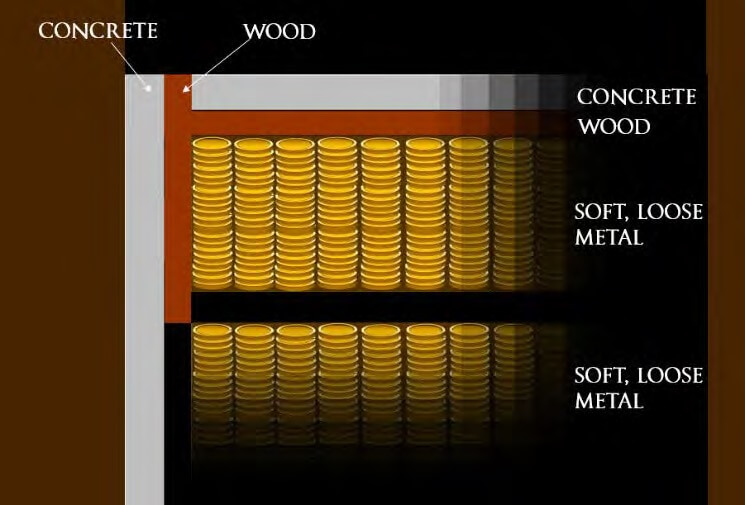
The drilling operation conducted by treasure hunter Harry Bowdoin in 1909 was not nearly as fruitful as that performed by his Oak Island Treasure Company predecessors. Aside from blue clay and pieces of concrete-like material which he identified as natural limestone, Bowdoin recovered no evidence of treasure or manmade structures. Engineers John Talbot and Thomas Nixon, who conducted drilling operations in the Money Pit area in the early 1930s, similarly found little aside from fragments of oak wood and cement. Gilbert Hedden maintained this pattern of disappointment in 1934 and 1935, when his own drilling operations yielded nothing aside from fragments of very old oak wood. Erwin Hamilton fared similarly in 1938, as did George Greene in 1951.
In 1952, treasure hunter Mel Chappell hired brothers William and Victor Harman to conduct a drilling operation in the area north of the Chappell Shaft, where the original Money Pit was supposed to lie. In addition to old oak and spruce, the Harman brothers brought up coconut fibre and blue clay from various depths.
Robert and Bobby Restall conducted their own drilling operations in the 1960s, during which they drilled through what they believed to be wood-shored tunnels. Their findings led Robert Restall to develop his theory that two tunnels, one of them diagonal and the other spiral-shaped, lay beneath the Money Pit area and led to the Chappell Vault.
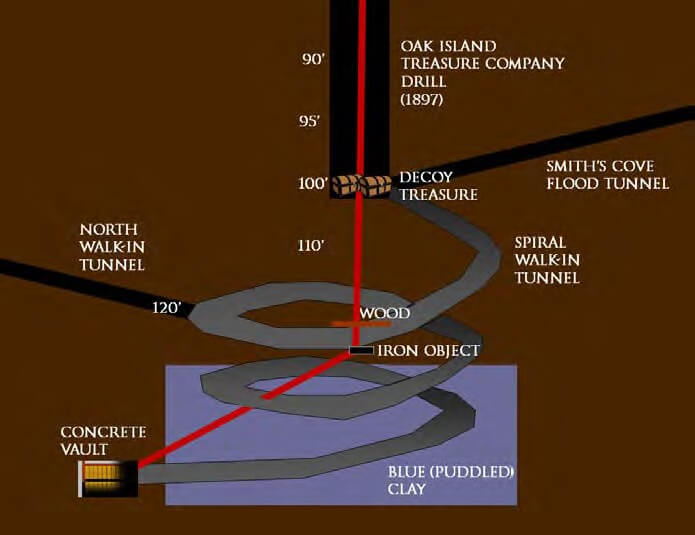
Robert Dunfield’s drilling operation in the 1960s revealed the presence of a 40-foot cavern in the Money Pit area extending from 142’-181’ below the surface, something which George Greene had discovered during his own Money Pit area drillings.
In 1967, David Tobias and Dave Blankenship of Triton Alliance hired a contract drilling company called Becker Drilling to punch 60 holes in the Money Pit area. This operation yielded pieces of china, oak wood (carbon dated from 1490-1660), cement, charcoal, blue clay, metal, brick, cavities, and wood-shored tunnels at depths of between 160-212 feet in the Money Pit area. In 1970, Triton Alliance initiated another massive exploration drilling operation on the island, this time hiring a Toronto-based geophysical company called Golder Associates to sink holes on the island, albeit at locations north of the Money Pit area, some of which Dan Blankenship prescribed through the mysterious art of dowsing. One of these holes, located 180 feet from both the Money Pit and the Cave-In Pit, yielded fragments of old iron chain at a depth of 165 feet. This particular drillhole, dubbed Borehole 10-X, would be painstakingly widened into a shaft which would come to dominate Blankenship’s 50-year-long Oak Island treasure hunt.
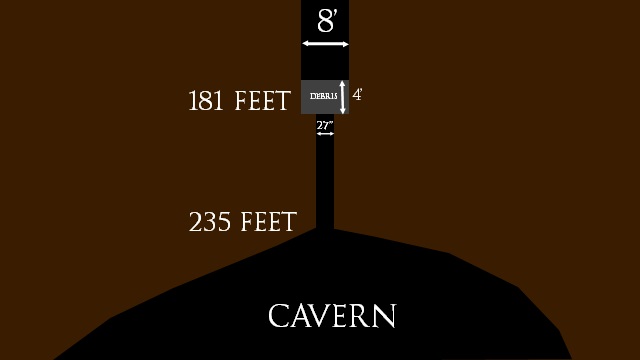
Back in Season 1, Episode 1 of The Curse of Oak Island, the Lagina brothers conducted a small haphazard drilling operation in the Money Pit area and discovered several pieces of china at a depth of 165 feet.
Oak Island Tours Inc. conducted a fruitless drilling operation in the Money Pit area in Season 2, Episode 2, after which they decided they needed to bring a more powerful drilling rig to the island. The procedure resumed in Season 2, Episode 4, during which the treasure hunters punched a hole from which they extracted a 140-foot-deep core sample containing fragments of old wood, clay, and a hard substance identified as either limestone or primitive concrete. Craig Tester suggested that the crew may have drilled into the side of the concrete-covered Chappell Vault first discovered in 1897. In Season 4, Episode 4, this borehole was widened into a shaft called Valley 3. In Season 4, Episode 6, the crew excavated the supposed vault below with a hammergrab and extracted wood bearing circular saw marks- an indication that the feature in question was probably a part of the 1931 Chappell Shaft and not the mysterious underground vault discovered by the Oak Island Treasure Company as hoped.
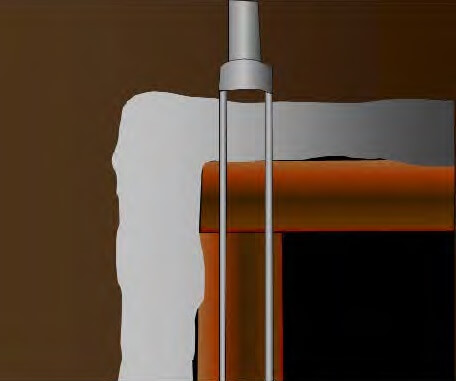
In Season 3, Episode 12, the Fellowship of the Dig drilled a hole at a location in the Money Pit area prescribed by Charles Barkhouse, unearthing fragments of old wood and a tiny piece of metal which the treasure hunters jokingly observed resembles the shape of Oak Island. The crew terminated the hole at a depth of 171 feet, when it dropped into what proved to be a 21-foot-deep cavity. In Season 3, Episode 13, the crew lowered a special camera down this hole, which was dubbed C1 in honour of Charles Barkhouse. At a depth of 171 feet, the camera picked up a shiny, gold-coloured object which the treasure hunters have made sporadic attempts to retrieve ever since. You can find a more comprehensive history of Borehole C1 in my video on Season 8, Episode 1, which you can find by clicking the link in the top right-hand corner of this video.
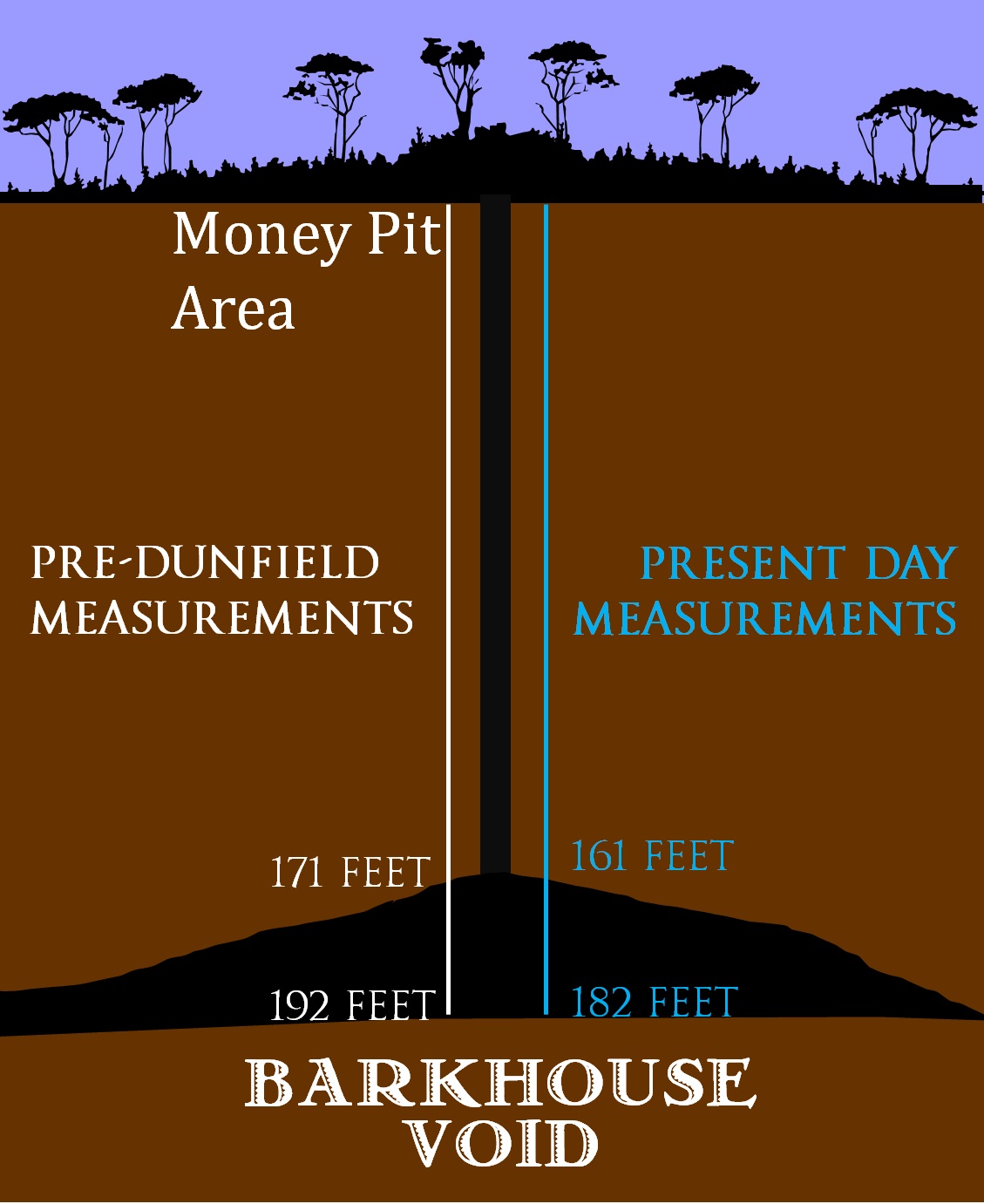
Throughout Season 5, a contracting company called the Brewster Drill team sank forty 6-inch-wide, 200-foot-deep boreholes in the Money Pit area in a pattern referred to as the Geotech Grid. During this massive operation, the contractors recovered countless fragments of old wood, charcoal, and steel, and encountered several impenetrable objects and underground cavities. In Season 5, Episode 5, they drilled a hole dubbed H8, which yielded two pieces of 17th or 18th Century human bones, along with fragments of pottery, leather, parchment, and paper.
In Season 6, Episode 4, Oak Island Tours Inc. commissioned Choice Sonic Drilling with sinking a hole called DE6 in the Money Pit area in a vain attempt to intersect an anomaly indicated by seismic survey data, the edge of which H8 is believed to have clipped. That same episode, Choice Drilling sank drillhole H7.5 nearby, finding coconut fibre and wood at depth in the process. In Season 6, Episode 5, the contractors sank drillholes HI4 and IJ5.5, both of which yielded pieces of wood. The treasure hunters suspected that IJ5.5 intersected the side of the Shaft 6 searcher tunnel, built from Shaft 6 to the Money Pit in 1861. In Season 6, Episode 9, Choice Drilling sank K5.5 in an attempt to follow the Shaft 6 tunnel to the Money Pit.
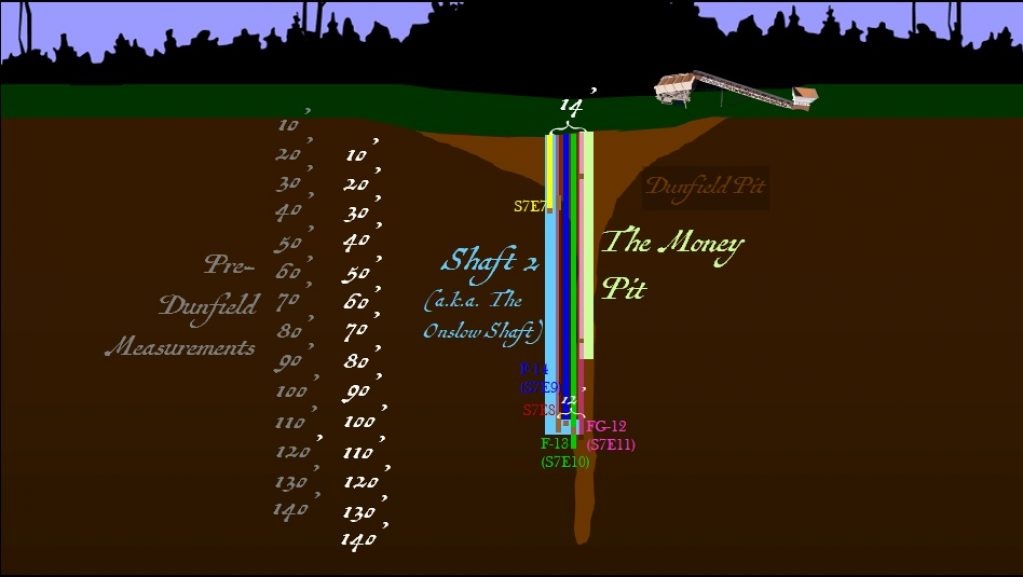
In a further effort to pinpoint the precise location of the original Money Pit, the Fellowship of the Dig had Choice Drilling sink exploratory holes in the Money Pit area in search of Shaft 2 throughout Season 7, Episodes 7 and 8, ‘Shaft 2’ having been built 14 feet southeast of the Money Pit by the Onslow Company in 1804. This endeavour was a success, and Season 7, Episode 8 ended with the narrator’s affirmation that the crew had indeed determined the location of the original Money Pit. Throughout Season 7, Episodes 9 and 10, the treasure hunters had Choice Drilling punch holes in search of the Shaft 2 tunnel, which connected Shaft 2 with the Money Pit. This operation was also a success which further supported the crew’s hypothesis regarding the Money Pit’s location. In Season 7, Episode 13, Choice Drilling sank holes at the suspected location of the original Money Pit but failed to find anything of interest.
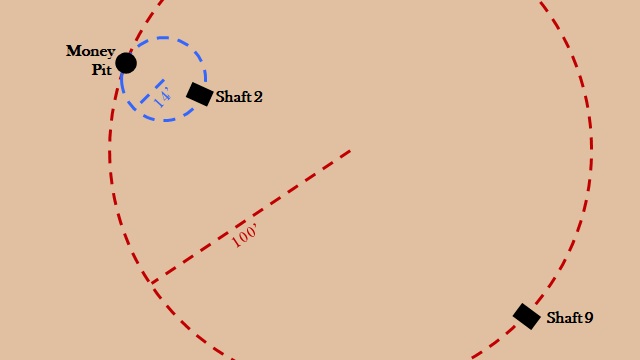
Since the Oak Island crew has determined the location of the original Money Pit, the drilling operation which they intend to carry out throughout Season 8 is presumably for the purpose of locating the elusive Money Pit treasure, which is believed to have slid into some underground tunnel or subterranean void following the Money Pit’s collapse in 1850.
Judi Rudebusch and Gretchen Cornwall
In the middle of this episode, the Fellowship of the Dig gathered in the War Room to Skype with theorists Judi Rudebusch and Erin Helton. Judi Rudebusch first appeared on The Curse of Oak Island in a War Room meeting back in Season 6, Episode 6, in which she was introduced as a friend and research partner of the late Zena Halpern. In that episode, Rudebusch introduced the crew to Gretchen Cornwall, the author of a 2015 book entitled ‘The Secret Dossier of a Knight Templar of the Sangreal’, and to Cornwall’s own research partner, John Temple, an alleged descendant of a Templar knight.
Erin Helton’s Theory
Erin Helton, the other theorist with whom the Fellowship of the Dig met with in the War Room in Season 8, Episode 5, is a senior programmer for a company called Resource Data Inc. While introducing herself, Helton stated that she began her career in Geographic Information Systems (GIS), a field of study revolving around a type of computer system used for collecting, mapping, and comparing geographic data.
In this episode, Helton demonstrated her attempt to locate the anchors alluded to on Zena Halpern’s map of Oak Island, first introduced in the Season 4 premiere. First, she plotted the coordinates of the boulders which comprise Nolan’s Cross. Then, using Steve Guptill’s survey data, she plotted a boulder found during the crew’s Season 6 excavations at Smith’s Cove, which she labelled ‘20A’. Later in the episode, this boulder was revealed to be the drilled stone discovered by Gilbert Hedden in the 1930s. Next, Helton plotted 21A, a boulder which lies on Oak Island’s westernmost end. Helton pointed out that 20A is located perfectly due east of 21A. Next, the GIS expert noted the position of a third boulder, which she called ‘6A’, located on Oak Island’s northwestern beach. She then drew a circle around 6A with a radius measuring the distance between that boulder and 21A, and pointed out a fourth boulder which lies at the intersection of its circumference and a line drawn along the crossbeam of Nolan’s Cross. She called this fourth boulder ‘15A’, and identified it as the western anchor on Zena Halpern’s map. Finally, Helton located a fifth point of interest on Oak Island’s northeastern beach, situated 30 degrees east of north of 15A, which she identified as the eastern anchor on Halpern’s map. “I have numerous alignments and very faint LIDAR suggesting that there will be a boulder located [at that point]”, she concluded.

Recall that LIDAR scans, which were conducted on the suspected 90-foot stone in Season 6, Episode 7; on the Tory Martin stone in Season 6, Episode 10; and on the South Shore Cove in Season 6, Episode 14, involve shooting pulses of laser light at the object to which the scan is applied and recording the speed and wavelengths of the light that is reflected, and are intended to locate and enhance anomalies invisible to the naked eye. Erin Helton’s use of the term LIDAR in this context indicates that she worked off some sort of map depicting the results of an aerial LIDAR scan of Oak Island.
Next, Erin Helton showed the treasure hunters a map of the eastern half of Oak Island, which was included in an article entitled ‘New Clews Aid Search for Oak Island’s Gold’, published in the June 1939 issue of the magazine ‘Popular Science’. This map features the original Money Pit, the two famous drilled stones, and other landmarks which dot the island’s eastern half. Although it was not mentioned in this episode, this map is intended to illustrate Gilbert Hedden’s observation that the features and instructions which appear on the mysterious Wilkins Map correspond with chilling accuracy with landmarks on Oak Island.

Helton compared the data from this map to her own map of Oak Island and plotted what she believed to be the location of the original Money Pit. This location, Helton informed the treasure hunters, lies three feet away from Borehole RF-1 (sunk from Season 7, Episodes 21–23), which Steve Guptill believes to be the caisson which lies closest to the original Money Pit.
Later in the episode, Steve Guptill led Marty and Alex Lagina, Jack Begley, and Gary Drayton to the westerly anchor point identified by Helton. There, the treasure hunters found the top of a small white boulder, the bulk of which was buried in the ground. Jack Begley manually unearthed the boulder with a shovel, whereupon Guptill found a tiny depression on its surface. The treasure hunters speculated as to whether the stone might have served as some sort of anchor to which boats were moored years ago, as suggested by Helton’s theory. The treasure hunters then used a crowbar to expose the rock’s bottom face but failed to find any obviously manmade markings thereon.
That accomplished, Steve Guptill led his fellow treasure hunters to the site of Helton’s northeasterly anchor point. We learned later on in the episode that this site lies at the edge of the Boulderless Beach, a stretch of beach on Oak Island’s northeastern shore curiously devoid of large rocks. The crew members indeed found a boulder at the site, which sat at the base of a beachside tree, and which bore great resemblance to the stone at the westerly anchor point in both size and appearance. It must be mentioned that the surrounding beach is littered with similar-looking stones. Guptill examined the top of the rock and found a t-shaped marking. Alex Lagina opines that this marking is probably natural, but suggested, perhaps imaginatively, that another adjacent marking evokes one of the carvings on the Boat Stone, which features in Robert Markus’ theory (presented in Season 3, Episode 3).
Following their excursion to Oak Island’s northeastern shore, the treasure hunters met with the rest of the Fellowship outside the Oak Island Interpretive Centre and described the results of their search for the anchor stones. Marty Lagina expressed his skepticism, saying that he would expect the anchor stones to be massive if they were indeed considered landmarks as suggested by Halpern’s map. Jack Begley, on the other hand, said that he found the western stone intriguing due to the pockmark on its surface and its location in relation to the swamp. In a later interview, Rick Lagina, who has made no secret of his admiration for Zena Halpern and her work in the past, voiced his appreciation for Erin Helton’s efforts to investigate the anchor points on Halpern’s mysterious map of Oak Island.
Zena Halpern’s Map of Oak Island
In this episode of The Curse of Oak Island, Geographic Information System specialist Erin Helton attempted to determine the location of the anchors labelled on Halpern’s Oak Island map. A subsequent investigation revealed two unremarkable boulders at the locations which Helton prescribed.
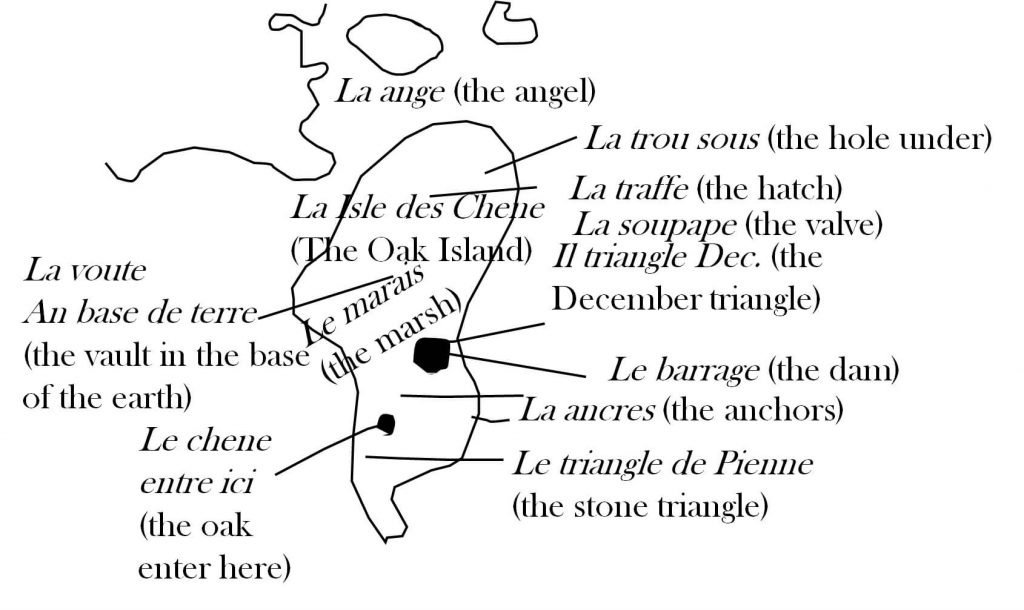
Recall that Zena Halpern first introduced her map of Oak Island in the Season 4 premiere, along with the cryptic document dubbed ‘La Formule’ and a map of Nova Scotia bearing the date 1179. Halpern’s Oak Island map bears the date 1347, and is labelled with French words denoting various landmarks on the island. Although many of these labels clearly reference well-known Oak Island features like the swamp, the Money Pit, and the stone triangle which once stood on the South Shore Cove, some of the others are more enigmatic. The three most mysterious labels, when translated into English, read “the valve”, “the hatch”, and “the anchors.”
In Season 4, Episode 2, the Oak Island crew searched for the hatch indicated on Halpern’s map and found a rocky angular cavity on the surface of Lot 22. Archaeologist Laird Niven opined that the depression might constitute a man-made structure, prompting Rick and Marty Lagina to apply for a permit which would allow them to excavate the anomaly.
In Season 4, Episode 5, the Oak Island crew, having since acquired the aforementioned permit, began to excavate the depression with hand tools. They quickly discovered that the formation does not open into an underground tunnel as they had initially hoped, and agreed that further excavation was unwarranted.
In Season 5, Episode 8, we were introduced to a note scribbled in the margins of Zena Halpern’s map of Oak Island in what appears to be some antiquated form of French. Halpern elaborated on this message in her 2017 book ‘The Templar Mission to Oak Island and Beyond’, translating it as “This drawing for M. Francois Rochefoucauld, a little drink learned from Neustria.” Neustria was the western territory of the Dark Age Merovingian/Carolingian Kingdom of the Franks, located in what is now Northern France, and Rochefoucauld is the name of an old French noble house around which several Oak Island theories revolve.
Halpern described how she came into the possession of the Oak Island map, as well as the mysterious document ‘La Formule’, in her book. Halpern, her friend and fellow researcher Donald Ruh, and a mutual friend named Harry Weymer, came across these documents by chance while visiting at Halpern’s home during Christmas holidays in 2011. While examining a book that had belonged to the late William Jackson- a mysterious researcher and the source of most of the material around which Halpern’s theory revolves- the friends found a strange note scribbled on the back inside cover. The message read, “Annati holds the key now. That’s why I use this page. The Frenchman was right. They wanted the info about the tunnels, so they bought the documents from me. But they didn’t get it. Who has it now? I think it was broken up into 8 parts. I have 4. What happened to the rest? 1996. La Bella Roma Rollo Mia Monte le Ostrica.”
The note’s mention of the word “Annati” prompted the three friends to inspect another of Jackson’s old books, namely ‘Palestine Before the Hebrews’ by Emmanuel Anati. Donald Ruh observed an unusual bulge in this book’s back cover. He slit the cover open with a knife and found two documents inside: the 1347 map of Oak Island and La Formule. A note scribbled in the margins of La Formule designated that document a gift to William Jackson from one Tim McInnis. With the help of her friend Judi Rudebusch, who appeared on Season 6, Episode 6 and Season 8, Episode 5 of ‘The Curse of Oak Island’, Halpern discovered that Tim McInnis was the late brother of the three McGinnis sisters who appeared in ‘The Curse of Oak Island’s’ Season 3 finale. This discovery prompted Halpern to contact the Lagina brothers and initiate her involvement with the TV show.
In a 2018 article published on the personal blog of forensic geologist Scott Wolter, host of the TV series ‘America Unearthed’, Halpern’s friend and fellow researcher, Donald Ruh, argued that the 1347 Oak Island map was probably fabricated by William Jackson as part of a plot to entrap a member of Propaganda Due, an Italian secret society with far-reaching political ambitions. As evidence to support his position, Ruh includes a photo in his article of a redacted letter which William Jackson purportedly wrote to him on August 21st, 1979. The letter mentions “a design that appears to have a solution to the Oak Island Treasure” which Jackson and his associates imprinted on the back of another letter which they hoped certain Propaganda Due members would “bid on”. One potential problem with this document is that it appears to have been typed using a proportional font (probably Times New Roman) in which each letter has a different width. Most typewriters in 1979 used monospace fonts in which each letter has the same width. The fact that the document appears to have been produced with modern word-processing software, coupled with the fact that it bears the signature of William Jackson, ruling out the possibility that it is the transcript of an original letter, suggests that the document may be a forgery.
Anthony Graves
In this episode, Gary Drayton and Rick Lagina, while metal detecting on Lot 13 near the East Hill feature, unearthed an old lock, which Drayton identified as a component of a Victorian-era cabinet or bureau. Rick Lagina noticed that the lock was found a short distance from the foundations of the cabin of former Oak Island landowner Anthony Graves.

Anthony Thickpenn Graves was Oak Island’s largest landowner in the mid-1800s, ever since his purchase of Lots 15-20 and nearby Frog Island from Henry Stevens in 1857. Interestingly, Stevens had purchased those same lots from the children of Money Pit co-discoverer John Smith just two months prior, and sold them to Graves for the same price at which he had bought them.
Anthony Graves professed to be a farmer, not a treasure hunter. From 1857 until his death in 1888, he quietly tended his Oak Island land with his wife Eliza Elizabeth and his children, occasionally leaving his farmhouse on the shores of Joudrey’s Cove to check on the progress of his treasure-hunting neighbours. Graves’ son, William, died of tuberculosis while in his 20s, and most of Graves’ daughters eventually moved onto the mainland to start families of their own. His daughter, Sophia, however, remained at the farmhouse along with her husband, Henry Sellers.
When the Halifax Company came to Oak Island in 1866, Graves leased them the eastern end of the island. Some Oak Island researchers have observed that Graves neglected to demand from the Halifax Company, or from any treasure hunting company who rented his land, a percentage of any treasure found, as was his right. Some believe this is simply an indication that Graves was skeptical of the Oak Island treasure hunt, believing that the Oak Island treasure was impossible to retrieve, or that it never even existed in the first place. Others, however, contend that Graves never demanded a portion of the Oak Island treasure because he believed he had already found it.
According to an old legend, Anthony Graves would row to the town of Chester from time to time and pay for goods using gold and silver Spanish coins. Some take this as evidence that Graves had discovered his own Oak Island treasure and kept quiet about it. Others, however, like researcher Kel Hancock, who co-runs the website OakIslandCompendium.com with Doug Crowell, point out that English, French, Spanish, Portuguese, and Latin American coins were common forms of currency in Nova Scotia about a century before Graves bought land on Oak Island.
Thanks for Reading!
Thanks for reading! If you enjoyed this article and would like to help support this channel, please check out our online bookshop:
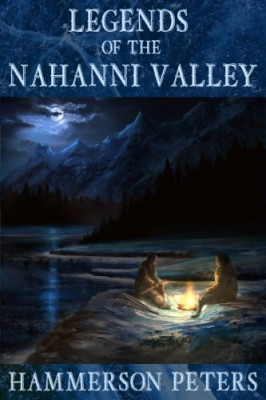
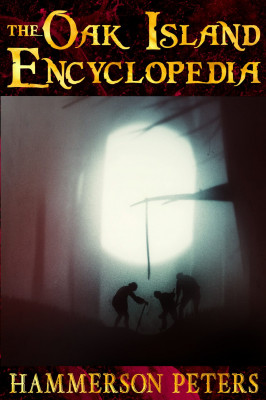
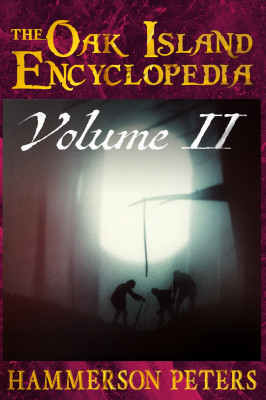
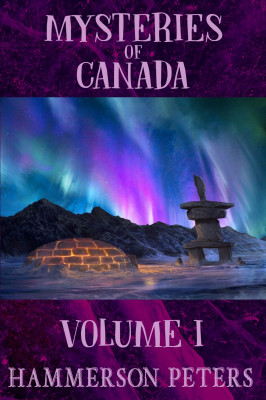
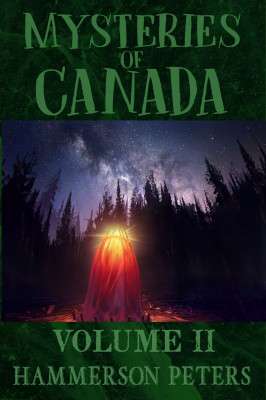
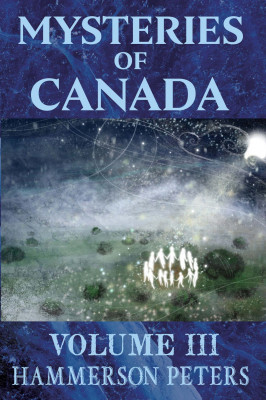
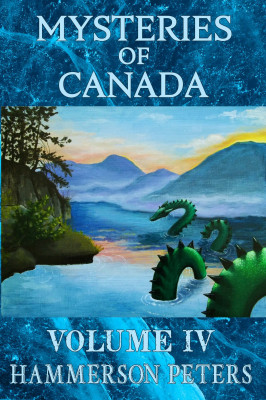

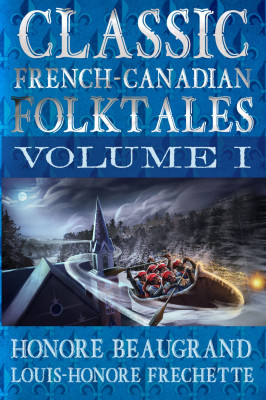
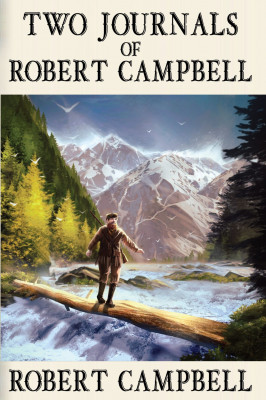
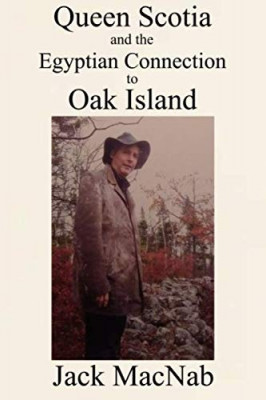
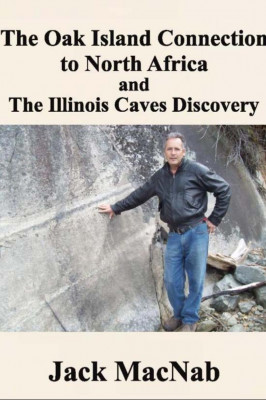
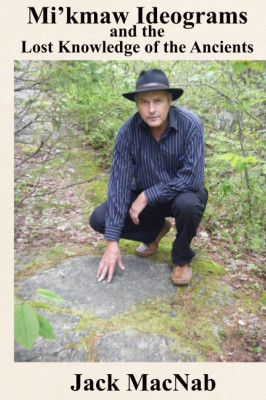
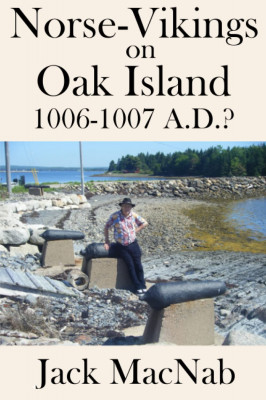
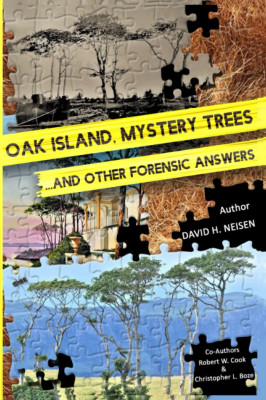
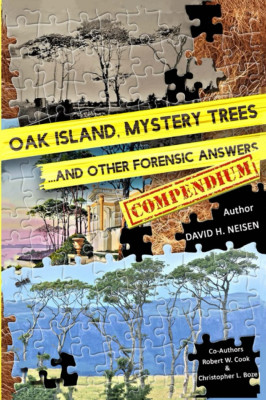
Mitch Adler
Nolan’s cross gives details in distance and direction of the deposit. The measurement of Feet was standardized in 1150AD in Scotland. Therefore, feet are used. The 3 stone features work together to reveal “X” the angle and direction to dig. There is a landbased representation of the constellation Taurus. The purpose is to imply locations on the water to be used as waypoints.
The deposit can be recovered by traveling 720′ from the top stone ‘A’ to located “X”. Or one can just flip the cross on its vertical axis to get the same point. One then tunnels in the direction of 147T at an angle of 33Degrees. Images and explanations are posted on FB Oak Island Groups. Anyway, “Enter Here” is “X”. The headstone of Taurus has a face and is listed as ‘Anchor’. Lastly the December Triangle is a reminder to find Taurus or another of 5 constellations identified by using the Winter Triangle. Oaks and eyes also are Templar Clues to look for taurus
R J Daniels
In the article by Donald Ruh posted on Scott Wolter’s blog he says Bill Jackson acquired the Oak Island map in 1994. Later in the blog he says the map is a fabrication. As proof he quotes a letter to him from Jackson dated Aug 21, 1979 in which he asks Ruh to engrave something on a swagger with clues to the location of the Ely letter “whose back we have imprinted with a design [not a map] that appears to have a solution to the Oak Island treasure”. The date contradicts the date at the beginning of the article which states that Bill Jackson acquired the map in 1994.
Whether the letter is a forgery or not is irrelevant. It does not prove that the Oak Island map is a fabrication.
Ruh was angry that neither Zena nor the show credit him with “owning” the map. So he tries to discredit it.